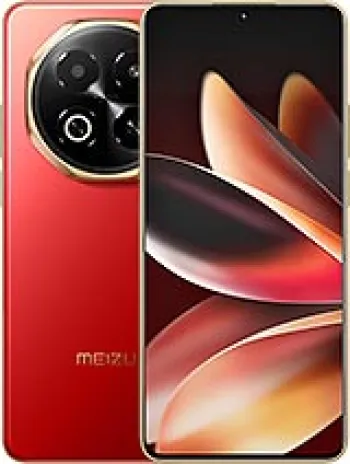
Overview of Meizu M3 Max
The Meizu M3 Max is a mid-range smartphone that was launched in September 2016, now discontinued. It offers a decent balance between performance and cost, appealing primarily to users looking for an affordable device with some premium features. Below, we’ll explore its various specifications and features in detail.
Design and Build Quality
The M3 Max is built with a sleek design featuring a full-metal body, which gives it a premium feel despite its mid-range status. With dimensions of 163.4 x 81.6 x 7.9 mm and weighing 189 grams, it strikes a balance between sturdiness and portability. The phone is available in multiple color options such as Champagne Gold, Silver, Gray, and Rose Gold, catering to a variety of style preferences.
Display
The Meizu M3 Max sports a 6.0-inch IPS LCD display with a resolution of 1080 x 1920 pixels, offering a pixel density of approximately 367 ppi. This equates to sharp and vivid visuals, which are ideal for multimedia consumption such as watching videos or browsing photos. The screen occupies roughly 74.4% of the phone’s front surface, providing a spacious view while managing to keep the device relatively compact.
Performance and Software
Under the hood, the M3 Max is powered by the MediaTek MT6755 Helio P10 chipset, featuring an octa-core processor (4x1.8 GHz Cortex-A53 & 4x1.0 GHz Cortex-A53) and a Mali-T860MP2 GPU. This hardware combination provides a good level of performance for everyday tasks such as web browsing, social media, and casual gaming.
On the software front, the device runs on Android 6.0 Marshmallow, topped with Meizu's Flyme 5.2 UI which adds a number of custom features and enhancements, offering a unique user experience.
Memory and Storage
The Meizu M3 Max comes equipped with 3GB of RAM which helps in multitasking, while 64GB of internal storage provides ample space for apps, photos, and media. Additionally, the phone supports microSDXC cards, although it uses a shared SIM slot, allowing users to expand storage if needed.
Camera Capabilities
The device features a 13 MP main camera with an aperture of f/2.2 and phase detection autofocus (PDAF). It is accompanied by a dual-LED dual-tone flash to enable photography in low-light conditions. The camera supports video recording at 1080p@30fps, ensuring adequate quality for video capturing needs.
For selfies, the M3 Max includes a 5 MP front camera with an f/2.0 aperture, capable of taking decent self-portraits and video calls. However, it lacks advanced features like portrait mode or 4K video.
Battery Life
A key selling point of the M3 Max is its robust 4100 mAh non-removable Li-Ion battery. It supports fast charging at 24W, which allows the battery to recharge to 50% in just 30 minutes, according to advertised claims. This ensures that users can get enough battery life quickly, even during short charging intervals.
Connectivity and Network
The smartphone supports GSM, HSPA, and LTE networks, ensuring widespread compatibility with different cellular providers. It includes options for Wi-Fi connectivity (802.11 a/b/g/n dual-band), Bluetooth 4.1, and GPS with GLONASS for location services. However, the device does not include NFC capabilities, which limits its utility for contactless payments.
Additional Features
In terms of sensors, the device is equipped with a front-mounted fingerprint sensor, accelerometer, gyro, proximity sensor, and compass. Audio needs are met with a loudspeaker and a standard 3.5mm headphone jack, catering to users who prefer wired earphones.
Conclusion
Overall, the Meizu M3 Max is a solid offering for users who prioritize large display sizes and battery life without breaking the bank. While some aspects like the operating system and lack of certain modern features may feel outdated today, it was a competent contender in its time within the budget segment. Its blend of style, performance, and affordability made it an appealing choice for many consumers during its market presence.
Key Features of Meizu M3 Max
- Compatible with GSM, HSPA, and LTE networks.
- Large 6.0-inch IPS LCD display with a resolution of 1080 x 1920 pixels (~367 ppi).
- Powered by MediaTek MT6755 Helio P10 chipset and an octa-core processor.
- Internal storage of 64GB, expandable with a microSDXC card (utilizes shared SIM slot).
- 13 MP main camera with PDAF and dual-LED dual-tone flash for quality photos.
- 5 MP front-facing camera for selfies.
- Fingerprint sensor (front-mounted) along with accelerometer, gyro, proximity, and compass sensors.
- Solid 4100 mAh battery with fast charging capability (24W, 50% charge in 30 minutes).
- Runs on Android 6.0 (Marshmallow) with Flyme 5.2 UI.
- Available in attractive colors: Champagne Gold, Silver, Gray, and Rose Gold.
- Good audio quality with a loud speaker and 3.5mm headphone jack.
- Built-in GPS and GLONASS for accurate positioning services.
- Competitively priced around 270 EUR.
Disadvantages of Meizu M3 Max
- Outdated Operating System: Comes with Android 6.0 (Marshmallow) with no official updates to newer versions.
- Chipset Performance: Uses Mediatek MT6755 Helio P10 which may not handle demanding applications smoothly as compared to newer chipsets.
- Hybrid SIM Slot: The shared slot means you have to choose between a second SIM card or microSD expansion.
- Limited Front Camera: The 5 MP front camera may not meet the expectations of users looking for high-quality selfies.
- Lacks NFC: No support for NFC, limiting mobile payment options.
- No Radio: Does not include FM radio functionality which might be expected by some users.
- MicroUSB Port: Uses an older microUSB 2.0 connection instead of the more modern USB-C type.
- Discontinued Model: The device has been discontinued, meaning official support and parts may no longer be available.




















View Also
More Phones
All Rights Reserved +14046 Phones © Mobilawy 2025

























